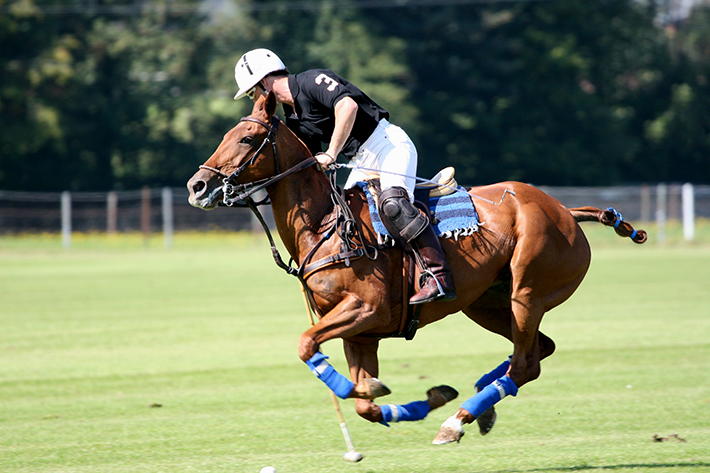
Horses, Helmets, and Dogs
Drusilla Malavase, a member of ASTM International Committee F08 on Sports Equipment and Facilities, first began thinking about standards for equestrian helmets in the mid-1970s, but her love affair with horses began long before that.
Riding since she was nine years old, Malavase says she, along with her best friend, organized her first horse show in Garrison, N.Y., when she was 12 years old.
"We brought back, right after World War II, a horse show that had been on hiatus during the war," says Malavase. "The two of us built the show ring, sold the parking spaces around it, made the jumps that were used, put it all together and in our first year raised over $1,000 for UNICEF."
Since then, Malavase has continued to "have a great interest in the full gamut of horse sports that the U.S. has to offer." In addition to her own riding activities, Malavase became an instructor.
Malavase initially began her standards work outside ASTM, when she headed a task group that developed the first equestrian helmet standard in the United States for the U.S. Pony Club in 1979. In 1984, Malavase read about ASTM and investigated the possibility of bringing the standard and the task group that developed it to ASTM.
The task group became part of Subcommittee F08.53 on Headgear and Helmets (under the jurisdiction of F08) that year and began the work that led to the initial approval of F1163, Specification for Protective Headgear Used in Horse Sports and Horseback Riding, in 1988. By 1990, many horse sport organizations had already required the use of F1163 in their rules and the standard continues to be used extensively in the United States and around the world.
Malavase also notes that F1163 served as a blueprint in the development of F1446, Test Methods for Equipment and Procedures Used in Evaluating the Performance Characteristics of Protective Headgear, originally approved in 1993.
"It's been a very interesting ride, to say the least," says Malavase of the road to the development and promotion of F1163. "Now, ASTM is a known entity in the horse world, big time, and has been ever since F1163 was first approved."
Malavase, a consultant on "horse-related matters of all kinds" for Good Sports Inc., has enjoyed working with both her fellow task group members and ASTM staff over the years. "We have been blessed with one wonderful manager after another," says Malavase. "Staff assistance has been outstanding. I would not have stayed as a volunteer this long if it hadn't been a hugely positive experience."
In addition to her work on equestrian helmets, Malavase has contributed to work on standards such as F1937, Specification for Body Protectors Used in Horse Sports and Horseback Riding, and stays informed on current ASTM work on turf surfaces for horse-riding arenas.
Malavase's interests are canine as well as equestrian. "Horses and dogs go together exceedingly well," says Malavase, which explains why she and her family have had Jack Russell terriers for the last 30 years. "I have run terrier trials, and I have been a judge for field trials with Jack Russells for a number of years."
Talk of Jack Russells leads Malavase to mention Aubrey, one of two dogs that she and her husband Al currently own and compete.
"She is an ace at racing and lure coursing [a sport involving chasing a mechanically operated lure] and trailing and locating. She's very special, she's a lot of fun," says Malavase, who also notes, "We call Aubrey my husband's dog to keep him happy."
 SN Home
SN Home Archive
Archive Advertisers
Advertisers Masthead
Masthead RateCard
RateCard Subscribe
Subscribe Email Editor
Email Editor